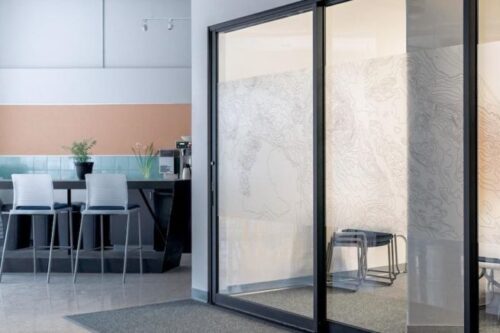The decision between a sliding door and a hinged door when building or renovating your home is an important one. Not only do they come with different benefits, but their aesthetic appeal also varies greatly. When trying to decide between the two, it’s important to consider which will suit your lifestyle best as well as how you want the exterior of your house to appear. Here, we’ll discuss what makes each type special and determine which option will give you the most bang for your buck in terms of both price and style. Keep reading to learn more about the difference between sliding doors versus hinged doors!

Understand the Difference Between Sliding and Hinged Doors
Doors play a more significant role than many people think. They provide practical functions such as security and privacy, but they can also be a statement piece that elevates the overall style of your home. Two commonly used door types are sliding and hinged doors. The difference between them lies in their operation and the amount of space they require. Sliding doors move horizontally, gliding smoothly along tracks, which means they don’t take up any floor space.
This makes them a great choice for homes with limited floor space, especially in areas such as patios, balconies, and small living rooms. On the other hand, hinged doors operate using hinges on one side of the door and swing either inwards or outwards. They require more space for opening and closing, but they are perfect for large openings such as main entrances or interior doors, where you want to create a statement. Understanding the difference between sliding and hinged doors is an essential step when choosing which type of door to use in your home.
Considerations Before Making a Decision
When deciding between sliding and hinged doors, it is important to consider the available space. Sliding doors are ideal for areas with limited space and can create a seamless transition between indoor and outdoor living spaces. On the other hand, hinged doors provide a classic look and can be an eye-catching feature in any home. Another factor to consider is the level of security you require. Hinged doors tend to be more secure than sliding doors, making them a better choice for those who value safety and peace of mind. You may consider Renewal by Andersen of Milwaukee for durable, stylish doors that will enhance the look and feel of your home. Whatever your final decision may be, it’s important to choose high-quality doors.
Benefits of Sliding Doors
Sliding doors have become increasingly popular in homes and offices over the years due to their numerous benefits. One of the most significant advantages is the amount of space they save as they don’t require any floor space to open or close. This makes them ideal for areas where space is limited, such as small rooms or corridors. Additionally, sliding doors are easy to operate, even for children and elderly family members who might have difficulty with traditional hinged doors. They can also help to increase natural light in a room, which has a range of benefits such as boosting productivity, improving mood, and reducing energy bills.
Another advantage of sliding doors is that they offer better insulation, which can help to keep the room warm in winter, and cooler in summer, thereby making them an ideal investment for all seasons. With various styles and designs to choose from, sliding doors offer an attractive and functional solution for any home or office.
Benefits of Hinged Doors
Hinged doors have been around for centuries and remain an integral part of the design of many homes and buildings today. These doors have a simple but effective design that allows them to pivot on hinges, making them easy to open and close. What sets hinged doors apart from their sliding or folding counterparts is their durability and strength. This type of door is built to last, able to withstand bumps and knocks without easily getting damaged. Installing hinged doors also offers great convenience as they can easily be locked and unlocked, providing security and privacy whenever needed.
Additionally, hinged doors come in an array of designs, from traditional to modern styles, allowing for easy customization to match the aesthetic of any home or building. All these benefits make hinged doors a great investment for anyone looking to improve the functionality, security, and aesthetics of their space.

Installation of Both Types of Doors
There are two main types of doors to choose from when installing: sliding doors and hinged doors. Sliding doors are a great space-saving option that works well in small areas, while hinged doors are a more traditional choice that fits seamlessly into any home design. To install sliding doors, it’s important to accurately measure the opening and cut the track to fit. Once the track is secured, the sliding doors can be hung and adjusted for smooth operation. Installing hinged doors involves measuring the opening and attaching the hinges to the frame. The door can then be mounted and adjusted for proper alignment and function.
No matter which type of door you choose, proper installation is crucial for optimal performance and longevity. With a little patience and attention to detail, you can install a beautiful and functional door that complements your home’s aesthetic.
Maintenance and Care for Both Types of Doors
Maintenance and care for both sliding and hinged doors can greatly impact their lifespan and functionality. Sliding doors, in particular, call for regular cleaning of tracks to prevent debris buildup and ensure smooth and effortless movement. Lubrication of both hinged and sliding doors is important to prevent friction and reduce wear and tear. Regular checks for loose screws, hinges, and frames will ensure that the doors are securely fitted and operating as they should. Painting and refinishing the doors at reasonable intervals protects them from environmental effects such as moisture and sunlight, which can cause fading, warping, and swelling. In conclusion, proper maintenance and care for both sliding and hinged doors are essential in ensuring their longevity, security, and efficiency.
Sliding and hinged doors both have their advantages. Understanding the differences between these two door types is essential before making a decision. With regular maintenance and care, both types of doors can last many years in excellent condition – so your decision will bring complete satisfaction for a long time to come.





